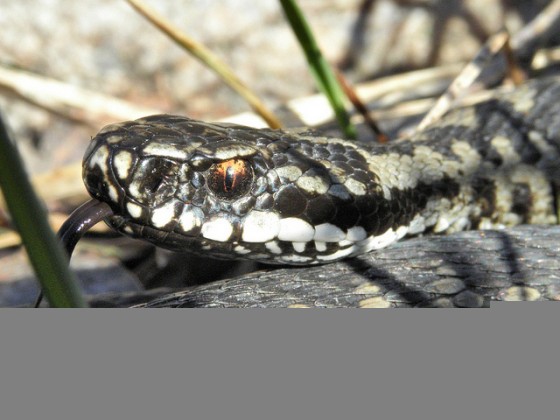From snow leopards to the Pakistani sand cat: The vast deserts, rough mountains and scarce waterways of the Middle East are home to many unique animals.
Enjoy these 8 unique exquisite Middle Eastern mammals, birds and reptiles threatened with extinction because of hunting, loss of habitat, lack of prey, or poisoning. Share them with your friends to draw awareness to this beautiful diversity and need for preserving habitat.
Dhole
Fewer than 2500 dholes, or Asiatic wild dogs, survive today. The dhole’s main prey, deer, have become scarce, and they have dense mountains, alpine forests and scrub jungles of the Middle East and Asia next to grassy plains where their prey feed. Also known as the whistling hunter, the dhole has a distinct high-pitched call.
Slender-Horned Gazelle
The slender-horned gazelle lives in sandy and stony desert lands of Algeria, Egypt, Sudan, and Libya. It relies on a plant-based diet for water. Only about 1000 individuals remain in the wild, as the slender-horned gazelle’s horns were once prized ornaments in North Africa.
Glenn, C. R. 2006. “Earth’s Endangered Creatures – Slender-horned Gazelle Facts”
Pakistani Sand Cat
Pakistani sand cats get their water needs from the rodents, mammals and insects in their diet. They live in the desert, so their habitat is safe. But they are hunted as pets, and by livestock traders who consider them a threat. No one knows how many have survived.
Mugger Crocodile
The mugger crocodile, a freshwater reptile that can reach a length of 13 feet, is found throughout the Indian subcontinent and the surrounding countries, including India, Iraq, Pakistan, and Sri Lanka. The Iranian and the Ceylon sub-species are endangered. The crocodiles feed on fish, frogs, crustaceans, birds, mammals, and other reptiles, and chase prey on land for short distances.
Only 100-200 Iranian crocodiles survive, because of illegal skin trading, fishing nets, and the loss of habitat. Their population is increasing in protected areas.
Egyptian Vulture
The Egyptian, or scavenger, vulture nests on rock ledges and feeds on carrion, small mammals or eggs. Unlike other birds, it uses small rocks to crack thick-shelled ostrich eggs. Between 10,000 and 100,000 individuals survive worldwide. Poison from the environment, along with disease and electrocution from power lines, threaten their existence.
Glenn, C. R. 2006. “Earth’s Endangered Creatures – Egyptian Vulture Facts”
Snow Leopard
The snow leopard is found in the mountain ranges of Central Asia, and eat boars, arkhar, markhor, bharal, ibex, marmots, and other small rodents. Snow leopards were once heavily hunted for their fur pelts, and other body parts are valued in traditional Asian medicine. Loss of habitat, persecution, and competition with humans for prey also threaten the species. Snow leopards do well in captivity. Conservation efforts have increased the current population to 6000 from about 1000 in the 1960s.
Black Bear
The Baluchistan bear, a subspecies of the Asiatic black bear, is also known as “moon bear” because of a distinctive white crescent marking on its chest. The Baluchistan bear is only found in Iran and Pakistan and is threatened by habitat destruction and hunting for its skin, paws and gall bladder used in Oriental medicine.
They eat crops and domestic livestock, and attack humans, too. Their diet consists of fruits, nuts, buds and insects as well as leftover prey killed by tigers and occasionally, domestic livestock. All Asiatic black bears are protected by law, but the law is rarely enforced.
Lars Valley Viper
The venomous Lars Valley Viper, also known as a Latifi viper, is so rare that no pictures are available–an American viper is pictured. Zoologists considered the Lars Valley species to be extinct, until they found an isolated population in the Elburz Mountains of Iran in 2000.
You may also enjoy:
7 Eco-Wonders of the Middle East
Israel, Iran Take Top Two Endangered Species Design Prizes











